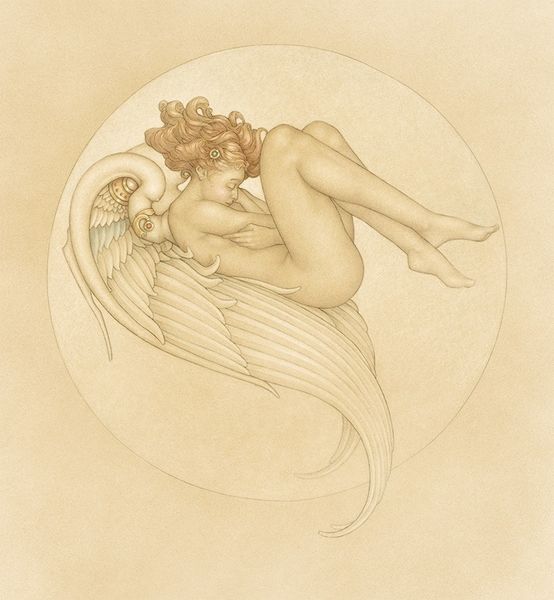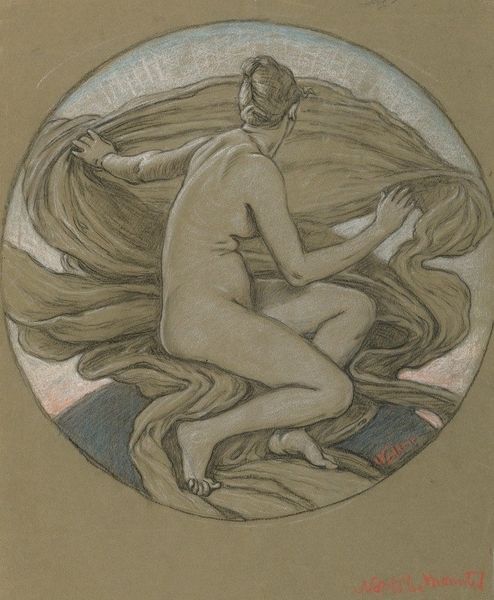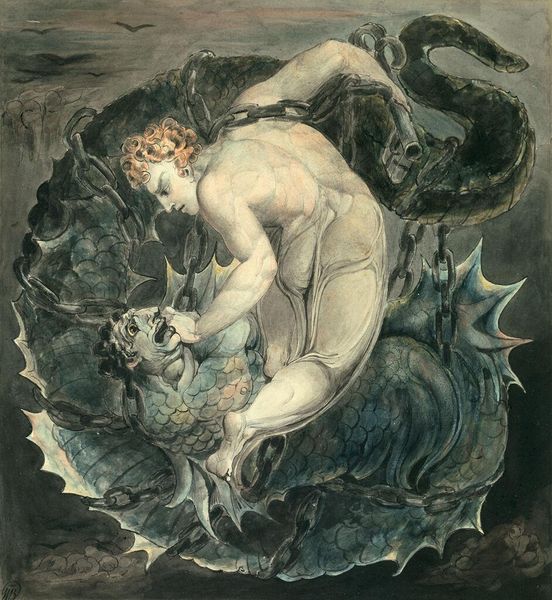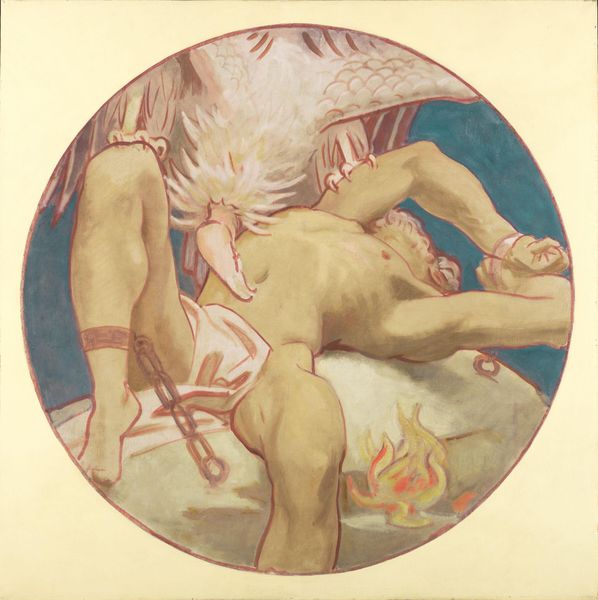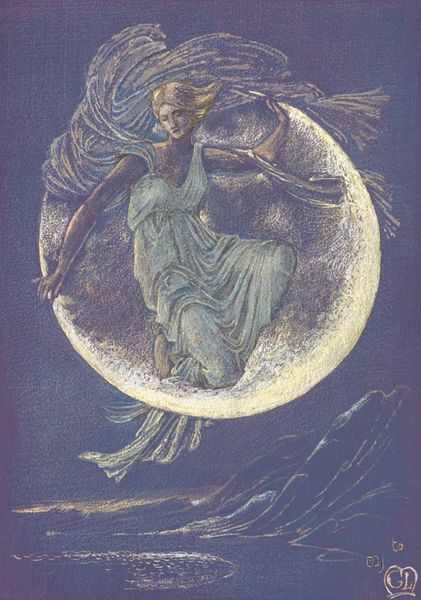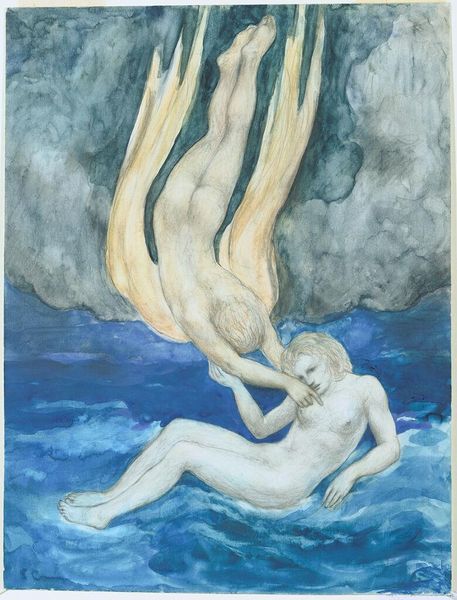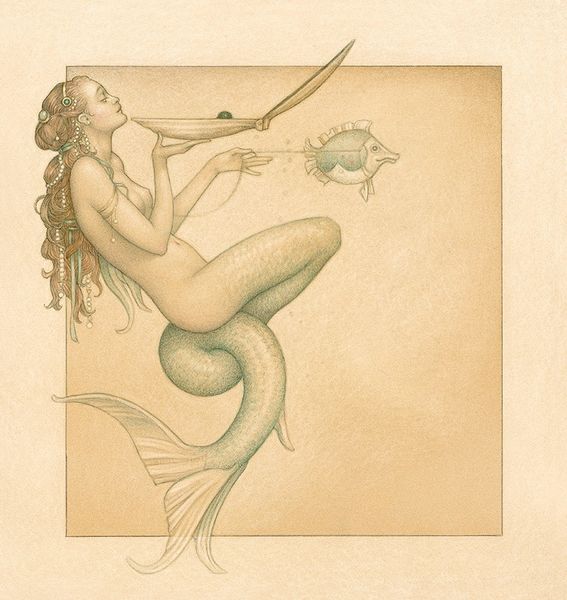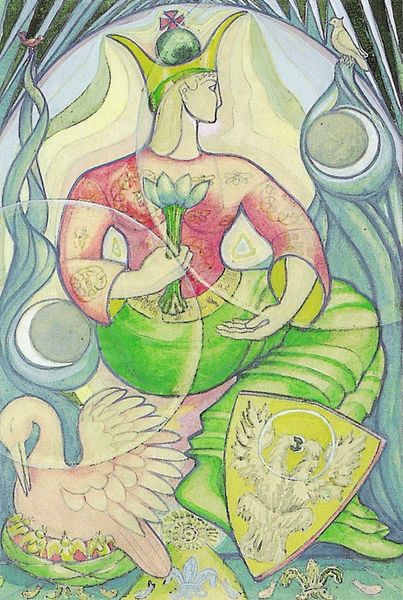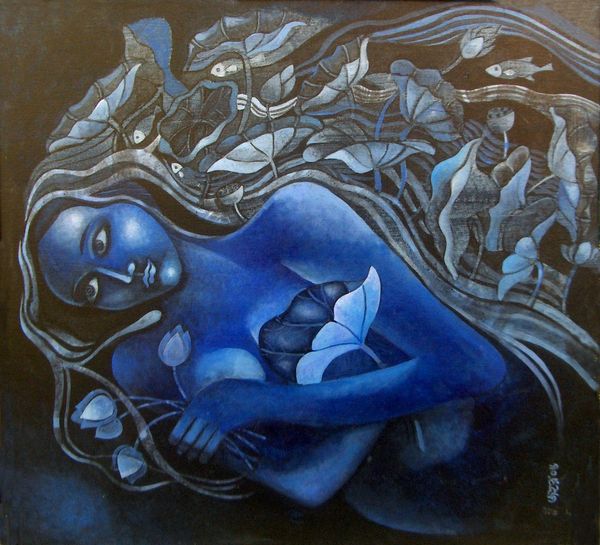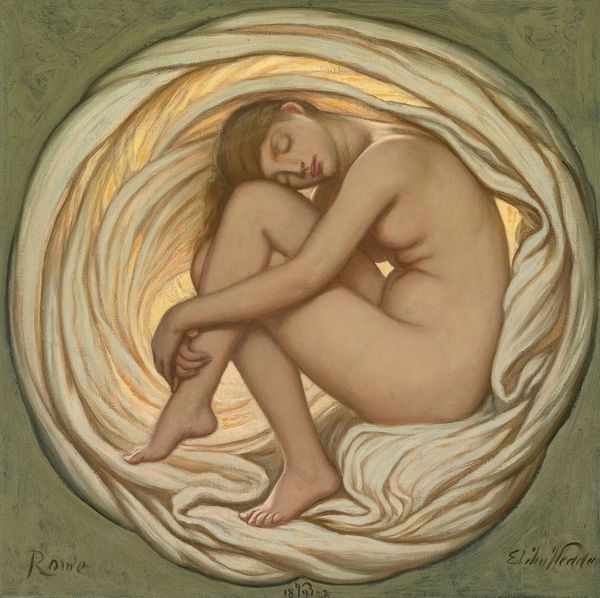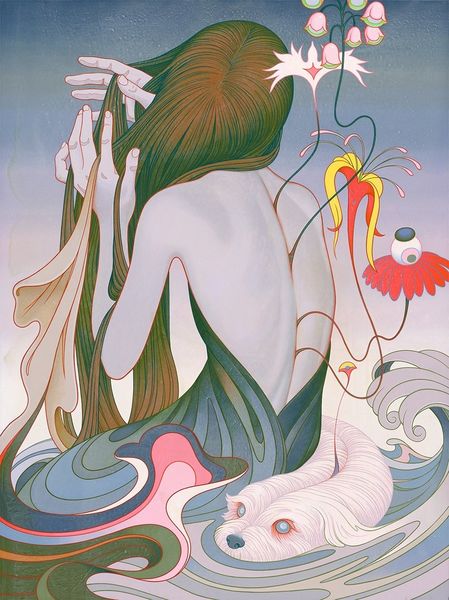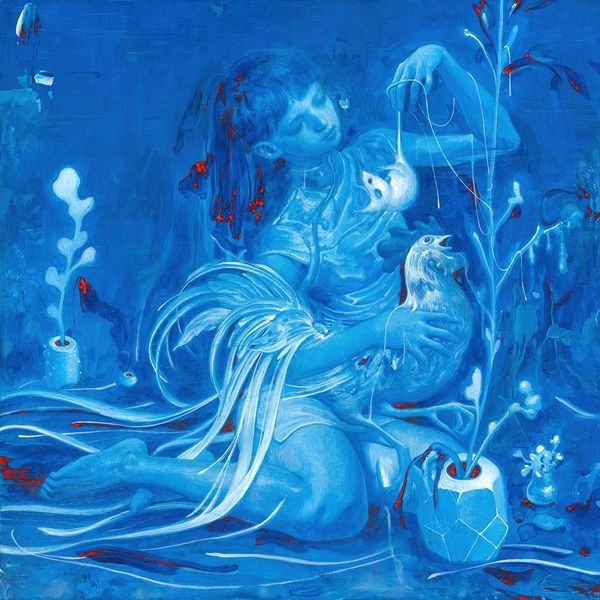
Copyright: Public Domain: Artvee
Curator: Here we have Richard Nicolaüs Roland Holst's 1914 pencil drawing, Christophorus. Editor: It's haunting, isn't it? I feel like I've stumbled upon a fever dream. The tenderness is offset by an undeniable tension. It's like watching someone carry not just a child, but the weight of the world. Curator: Roland Holst, though associated with socialism, often incorporated religious and mythological figures into his art. This drawing depicts Saint Christopher carrying the Christ Child across a river, a popular subject symbolizing protection and safe passage. It seems the artist did also works using religious, romantic, and surrealistic lenses. Editor: Protection…that's interesting, considering the almost spectral quality of the figures. The delicate pencil strokes and soft washes give them an ethereal feeling, like they might dissolve at any moment. I notice a sense of unease. And look at the lines, how he's crafted a sense of otherworldly embrace with waves, and almost botanical shapes? Curator: The wave-like elements definitely amplify the theme of passage and movement. Remember, St. Christopher is the patron saint of travelers. This was also a time of immense social change, right before the First World War. You can feel in a way that the war and his sympathy towards socialism are already present. Maybe the drawing speaks to the yearning for guidance and security amid chaos and uncertainty. Editor: Maybe, and it's such an odd perspective. It's round shape feels like looking into a locket. To me the waves make me think more of the interior world rather than the outside; like a stormy mind trying to overcome turmoil. It reminds me of when my child would hold onto me for dear life. Curator: Art is rarely straightforward, right? This drawing presents us with an icon transformed, steeped in pre-war anxieties. Roland Holst reframes St. Christopher's strength as burdened and somewhat weary, fitting his moment and artistic background. Editor: It's a beautiful meditation on burden and faith, even without knowing the religious context. Thanks to your information about the historical elements I realize the intention of this peace might not be as surreal as I thought at the start. But more personal, that might have meant more back then than anything. Curator: Exactly! It highlights how artists can borrow from religion to show political contexts in different styles such as Romanticism, which allows him to introduce his political point in different manner. Editor: A perfect bridge between the historical and the deeply personal, right? Well, this journey, heavy as it looks, makes one ponder.
Comments
No comments
Be the first to comment and join the conversation on the ultimate creative platform.
